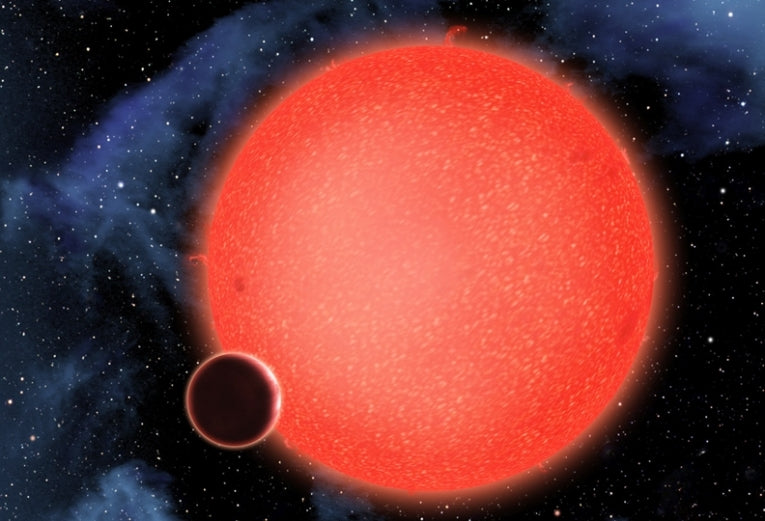A planet has been categorised as the first waterworld planet. The discovery, named GJ1214b, is almost three times bigger than Earth and nearly seven times heavier, consists mostly of water.
The 'super-Earth', which has a hot, steamy atmosphere, was categorised by Harvard-Smithsonian Center for Astrophysics (CfA) scientist Zachory Berta and others.
He says, "GJ1214b is like no planet we know of. A huge fraction of its mass is made up of water."
The planet was discovered three years ago by a team from the American-based CfA, headed by David Charbonneau. Every 38 hours the planet that is around 450-degrees Fahrenheit orbits a red-dwarf around 1.3 million miles away.
Jacob Bean, from CfA, investigated the planet's atmosphere and suggested it was most likely made mostly of water, but the conditions could also be due to the misty haze.
Zachory Berta and the team investigated the planet as it passed in front of its host star, using the
Hubble Space Telescope. Its light shone though the steamy atmosphere, providing an idea about the mixture of gases.
They used Hubble to calculate the infrared colour of sunset. As hazes are less transparent to visible light than infrared, they were able to identify that the atmosphere was steamy rather than hazy.
As the team calculate the size and mass of the planet it was able to determine that the density was around 2 grams per cubic centimetre. The average density of earth is around three times that amount, which indicated that GJ1214b consists of more water and less rock than Earth.
Scientists believe the high temperatures and pressures create strange substances such as 'hot ice' and 'superfluid water' that we have no experience of on Earth.
It is believed that GJ1214b was created further away from its star, where ice was freely available and eventually moved closer. Sometime during the process the surface temperatures would have been closer to the conditions on Earth.
The planet is around 40 light years away from Earth, towards the Ophiuchus constellation, so it can be investigated in future by the proposed James Webb Space Telescope.
More details on the findings are available on The Astrophysical Journal website.










